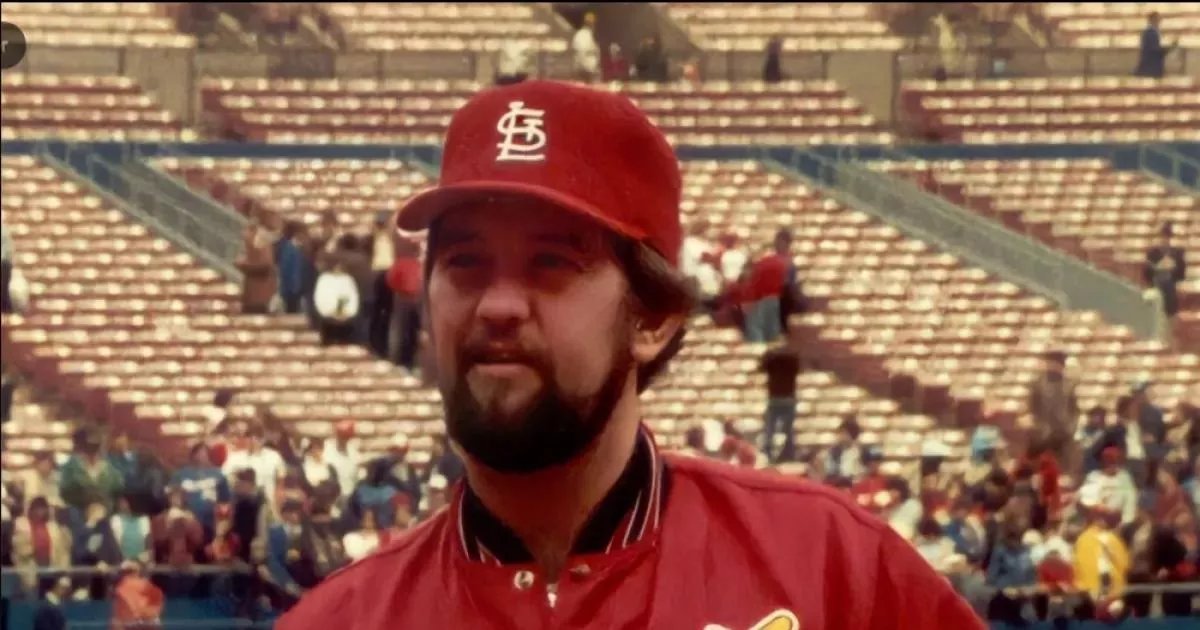Howard Bruce Sutter was a renowned American professional baseball pitcher known for his exceptional skills as a reliever in Major League Baseball (MLB) from 1976 to 1988. Sutter was particularly famous for his mastery of the split-finger fastball, which contributed to his dominance on the mound. He was a six-time All-Star and played a crucial role in securing the 1982 World Series championship. Throughout his career, Sutter achieved a career earned run average of 2.83 and amassed 300 saves, ranking third in MLB history at the time of his retirement. His remarkable performance earned him the National League's Cy Young Award in 1979, and he was a four-time recipient of the NL Rolaids Relief Man Award. Additionally, he stands out as the only pitcher to lead the National League in saves five times, cementing his legacy as one of the greatest relief pitchers in baseball history.
January 8, 1953: Birth of Bruce Sutter
Bruce Sutter was born on January 8, 1953, in Lancaster, Pennsylvania. He would go on to become a dominant relief pitcher in Major League Baseball, known for his effective use of the split-finger fastball.
1970: Selected by Washington Senators in MLB Draft
In 1970, Bruce Sutter was selected by the Washington Senators in the 21st round of the MLB draft. Despite this, he chose to attend Old Dominion University before starting his professional career.
September 1971: Signed by Chicago Cubs as Free Agent
In September 1971, Bruce Sutter was signed by the Chicago Cubs as a free agent after being scouted by Ralph DiLullo. This marked the start of his professional journey in baseball.
1971: Signing with Chicago Cubs
In 1971, Bruce Sutter was signed by the Chicago Cubs as an undrafted free agent. This marked the beginning of his professional baseball career, where he would serve as a closer for multiple teams.
1972: Recovery and Learning the Split-Finger Fastball
In 1972, after recovering from arm surgery, Bruce Sutter learned the split-finger fastball from minor league pitching instructor Fred Martin, a skill that would define his career.
1973: Success in Minor Leagues with New Pitch
In 1973, Bruce Sutter found success in the minor leagues with his newly learned split-finger fastball, recording a 3–3 win–loss record and five saves for the Quincy Cubs.
1974: Season with Key West Conchs and Midland Cubs
In 1974, Bruce Sutter split his season between the Class A Key West Conchs and the Class AA Midland Cubs, achieving a combined 1.38 ERA in 65 innings, showcasing his growing prowess on the mound.
1975: Leading Midland Cubs to Pennant
In 1975, Bruce Sutter led the Midland Cubs in ERA and saves, helping them win the Texas League West Division pennant with his exceptional pitching performance.
May 1976: Joining the Chicago Cubs
In May 1976, Bruce Sutter joined the Chicago Cubs, marking his entry into Major League Baseball. He finished the season with a 6–3 record and 10 saves, establishing himself as a key player.
1976: Promotion to Major Leagues
Bruce Sutter started the 1976 season with the Class AAA Wichita Aeros before being promoted to the major leagues, marking the beginning of his MLB career.
1976: MLB Debut and Career Start
In 1976, Bruce Sutter began his Major League Baseball career. He would go on to play 12 seasons in the MLB, becoming one of the sport's dominant relievers with his split-finger fastball.
September 8, 1977: Immaculate Inning Against Montreal Expos
On September 8, 1977, Bruce Sutter achieved an immaculate inning by striking out all three batters on nine pitches in the ninth inning against the Montreal Expos, becoming the 12th NL pitcher to do so.
1978: 27 Saves in 1978
In 1978, Bruce Sutter earned 27 saves and continued to be a formidable closer despite an increase in his ERA, maintaining his reputation as a reliable reliever.
May 1979: Tying NL Saves Record
In May 1979, Bruce Sutter tied the National League record for saves with 37, matching the achievement of Clay Carroll and Rollie Fingers, and exemplifying his dominance as a closer.
1979: Cy Young Award
Bruce Sutter won the National League's Cy Young Award in 1979 as the league's top pitcher. This year also marked the beginning of his record of leading the National League in saves for multiple seasons.
December 1980: Trade to St. Louis Cardinals
In December 1980, Bruce Sutter was traded to the St. Louis Cardinals, marking a new chapter in his career where he would continue to excel as a closer.
1980: Leading League in Saves Again
In 1980, Bruce Sutter led the league in saves with 28, further solidifying his role as one of the top closers in Major League Baseball.
1981: Fifth Consecutive All-Star Game
In 1981, Bruce Sutter made his fifth consecutive All-Star Game appearance, highlighting his consistent performance and reputation as one of the league's top pitchers.
1982: 1982 World Series Champion
In 1982, Bruce Sutter became a World Series champion with the St. Louis Cardinals. He played a crucial role in the team's success, earning two saves, including the Series-clinching save in Game 7.
1982: World Series Victory with Cardinals
In 1982, Bruce Sutter played a crucial role in the St. Louis Cardinals' World Series victory, earning the save in the pennant-clinching NLCS game and the Series-clinching Game 7 of the World Series.
1983: Unassisted Pickoff Play
In April 1983, Bruce Sutter executed a rare unassisted pickoff play against the Pittsburgh Pirates, showcasing his alertness and athleticism on the field despite a decline in his overall performance that year.
December 1984: Joining Atlanta Braves
In December 1984, Bruce Sutter joined the Atlanta Braves as a free agent, signing a unique six-year contract with deferred payments, influenced by his respect for Ted Turner and the team's atmosphere.
1984: Leading the League in Saves
In 1984, Bruce Sutter became the only pitcher to lead the National League in saves five times, further establishing his legacy as a dominant closer.
1984: Tie for Most Saves in a Season
In 1984, Bruce Sutter tied the major league record for most saves in a season with 45, sharing the record with Dan Quisenberry, and demonstrating his continued excellence as a closer.
1984: Bruce Sutter's Impact Before 1985
In 1984, Bruce Sutter's influence was evident as the Braves had only a few pitchers who achieved over 25 saves in a season. Sutter's personal total was just four saves shy of the entire Braves team's 49 saves that year.
1985: Bruce Sutter's Challenging Season
In 1985, Bruce Sutter's performance declined with an ERA rising to 4.48 and save total decreasing to 23. By the season's end, he suffered from a nerve impingement in his right shoulder, leading to surgery after the season.
1985: Whitey Herzog on Bruce Sutter's Departure
In 1985, Cardinals manager Whitey Herzog expressed his concern about facing the season without Bruce Sutter, emphasizing Sutter's significance by comparing his loss to Kansas City losing Dan Quisenberry. Herzog humorously suggested that if he were fired, Sutter should take care of him and his wife Mary Lou.
March 1986: Bruce Sutter's Recovery and Setbacks
By March 1986, Bruce Sutter was recovering from shoulder surgery, expressing optimism about his progress despite arm problems. He started the season well but was placed on the disabled list in May. By July 31, it was announced he wouldn't pitch for the rest of the season.
1986: Record Broken by Dave Righetti
In 1986, Bruce Sutter's record for most saves in a season was broken by Dave Righetti, who achieved 46 saves, marking the end of Sutter's record-holding streak.
February 1987: Bruce Sutter's Third Arm Surgery
In February 1987, Bruce Sutter underwent his third arm surgery to remove scar tissue and promote nerve healing. This surgery forced him to miss the entire 1987 season.
1988: Bruce Sutter's Return and Challenges
In 1988, Bruce Sutter returned to limited action with the Braves, earning saves on consecutive nights, showcasing flashes of his former prowess. He finished the year with a 1-4 record, a 4.76 ERA, and 14 saves in 38 games, but ended the season with arthroscopic knee surgery in late September.
1988: Final MLB Season
The year 1988 marked Bruce Sutter's final season in Major League Baseball. Over his 12-season career, he recorded significant achievements, including a 2.83 ERA and 300 saves.
March 1989: Bruce Sutter Faces Career Uncertainty
In March 1989, Bruce Sutter dealt with a severely torn rotator cuff, acknowledging a 99.9% chance of not returning to baseball. The Braves opted to place him on the disabled list instead of releasing him, and Sutter planned to reassess his condition after rest. He was released by the Braves in November.
1989: Retirement from Professional Baseball
Bruce Sutter retired from professional baseball in 1989 after experiencing shoulder problems that required three surgeries. He left a significant impact on the game with his specialized role as a closer.
1991: NL Record Broken by Lee Smith
In 1991, Bruce Sutter's National League record for most saves in a season was broken by Lee Smith, who recorded 47 saves, showcasing the evolving talent in MLB closers.
1993: Bruce Sutter's Saves Record Surpassed
In 1993, Bruce Sutter's career saves total of 300, once an NL record, was surpassed by Lee Smith. At the time of his retirement, his total was the third highest in history, behind Rollie Fingers and Goose Gossage.
1999: Chad Sutter Drafted by the New York Yankees
In 1999, Bruce Sutter's son, Chad Sutter, was drafted by the New York Yankees in the 23rd round of the amateur draft. Chad played one season in the minor leagues before joining Tulane University's coaching staff.
January 10, 2006: Bruce Sutter Elected to Baseball Hall of Fame
On January 10, 2006, Bruce Sutter was inducted into the Baseball Hall of Fame in his 13th year of eligibility, becoming the fourth relief pitcher and the first pitcher inducted without starting a game. He received 400 votes out of 520, securing 76.9% of the votes.
September 17, 2006: Bruce Sutter's Number Retired by Cardinals
On September 17, 2006, Bruce Sutter's number 42 was retired by the St. Louis Cardinals at Busch Stadium, honoring his career. He shares this honor with Jackie Robinson, whose number 42 was retired by all MLB teams in 1997.
2006: Induction into Baseball Hall of Fame
In 2006, Bruce Sutter was inducted into the Baseball Hall of Fame, recognizing his outstanding contributions to the sport. This was his 13th year of eligibility for the honor.
August 23, 2010: Bruce Sutter Named Minor League Consultant
On August 23, 2010, Bruce Sutter was appointed as a minor league consultant for the Philadelphia Phillies, tasked with evaluating pitching prospects at the team's Class AA and AAA affiliates.
November 2010: Bruce Sutter Inducted into St. Louis Sports Hall of Fame
In November 2010, Bruce Sutter was inducted into the St. Louis Sports Hall of Fame. Whitey Herzog accepted the honor on his behalf, as Sutter's wife was hospitalized with cancer at the time.
January 2014: Bruce Sutter Inducted into Cardinals Hall of Fame
In January 2014, Bruce Sutter was announced as one of 22 former players and personnel to be inducted into the St. Louis Cardinals Hall of Fame Museum for its inaugural class.
2014: Induction into Cardinals Hall of Fame
In 2014, Bruce Sutter was inducted into the St. Louis Cardinals Hall of Fame, further celebrating his achievements and impact during his time with the team.
October 13, 2022: Death of Bruce Sutter
Bruce Sutter passed away on October 13, 2022, leaving behind a legacy as one of baseball's dominant relievers, with a career earned run average of 2.83 and 300 saves.
Mentioned in this timeline
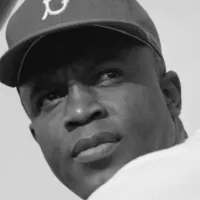
Jackie Robinson was an American professional baseball player who broke...
Pennsylvania is a U S state located in the Mid-Atlantic...

Chicago is the most populous city in Illinois and the...
The Atlanta Braves are a Major League Baseball MLB team...

Pittsburgh is a city in southwestern Pennsylvania situated at the...
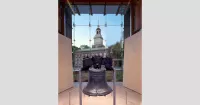
Philadelphia or Philly is Pennsylvania's most populous city and the...
Trending
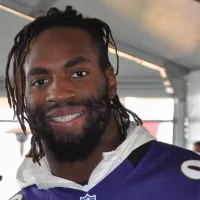
Matthew Judon is an American football linebacker for the Atlanta Falcons He played college football at Grand Valley State setting...
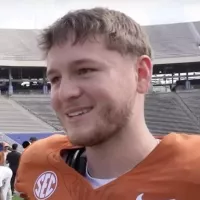
Quinn Ewers is an American football quarterback for the Texas Longhorns He began his college career as part of the...
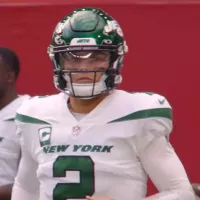
26 days ago Shai Hope Makes History: First to Score Centuries Against All Test Nations.
14 days ago Jack Smith Subpoenaed by House Republicans Amid Trump Prosecutions Probe, Testimony Expected.
12 days ago Lawsuit Filed Over KISD Stabbing; Killeen Principal Resigns From Ira Cross

2 months ago Kate Hudson and Sydney Sweeney at Variety's Power of Women Event.
Popular

Candace Owens is an American conservative political commentator and author...

Ilhan Omar is an American politician currently serving as the...

XXXTentacion born Jahseh Dwayne Ricardo Onfroy was a controversial yet...

Charles James Charlie Kirk was a prominent American right-wing political...
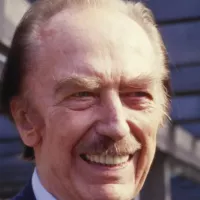
Frederick Christ Trump Sr - was an American real estate...

Bill Gates an American businessman and philanthropist revolutionized personal computing...
